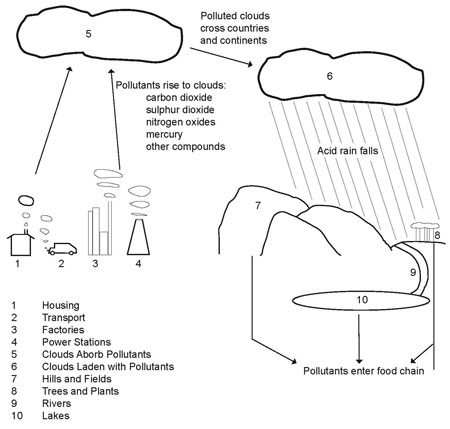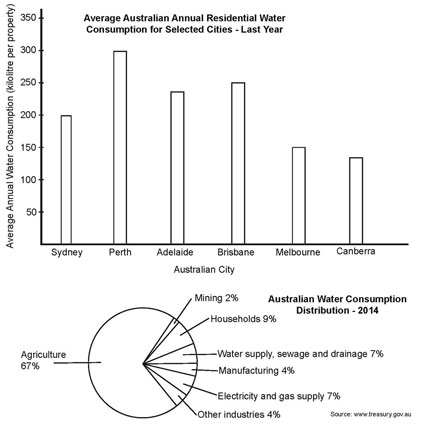IELTS Report, topic: Process diagram describing the cycle of pollution (from IELTS High Scorer’s Choice series, Academic Set 1)
This is a model response to a Writing Task 1 topic from High Scorer’s Choice IELTS Practice Tests book series (reprinted with permission). This answer is close to IELTS Band 9.
Set 1 Academic book, Practice Test 5
Writing Task 1
You should spend about 20 minutes on this task.
The images below explain the process of how pollutants from modern life become acid rain that in turn pollutes the environment and the food chain.
Summarise the information by selecting and reporting the main features, and make comparisons where relevant.
You should write at least 150 words.
Sample Band 9 Report
This diagram shows the cycle of pollution that contributes to the development of acid rain and how it affects the environment on which human life is dependent.
The majority of the pollutants created come from housing, transport, factories and power stations. These sources release various compounds such as carbon dioxide, sulphur dioxide, different nitrogen oxides, mercury and other compounds. These pollutants then rise up into the air and are absorbed by clouds, which then become contaminated in turn and travel across countries and continents. Then, once condensation occurs, water containing the pollutants in the clouds will condense and fall to the Earth in the form of precipitation, namely acid rain.
The acid rain will fall onto hills, fields, trees, plants and into rivers and lakes, contaminating them. This leads to the pollution of the environment and the food chain, as the pollutants are absorbed into the Earth or plants, which either act as a habitat or a food source for animals, destroying them or affecting their biological processes. This in turn will lead to the dying out of the animals, which will then lead to imbalance in the food chain, greatly impacting the ecosystem.
Go here for more IELTS Band 9 Reports




